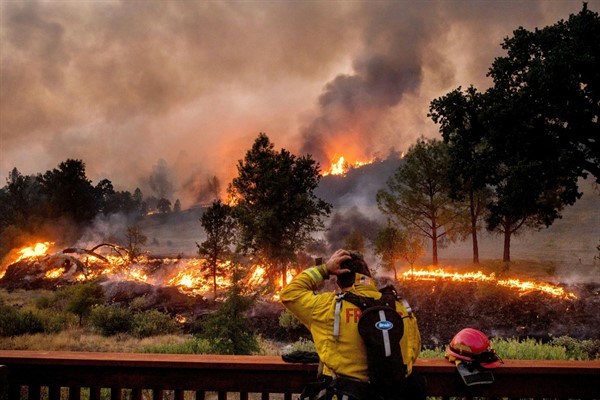As if COVID-19 were not enough to worry about, the global climate crisis is driving a “staggering rise” in natural disasters, the United Nations detailed last week in a new report, “The Human Cost of Disasters.” According to the U.N.’s Office for Disaster Risk Reduction, known as UNDRR, the number of natural disasters was 75 percent higher between 2000 and 2019 than in the previous 20 years. Unless humanity takes prompt, dramatic action to reduce greenhouse gas emissions, the planet risks becoming “an uninhabitable hell for millions of people,” the report’s authors warn. Unfortunately, the world is not doing nearly enough either to mitigate climate change or prepare for its associated calamities.
Natural disasters are a fact of life on Earth and an ineluctable feature of the human condition. Their frequency is increasing, however—and we are to blame. “The Human Cost of Disasters” documents some 7,348 over the past two decades, up sharply from the 4,212 between 1980 and 1999. Since 2000, natural disasters have affected more than 4 billion people—roughly 200 million per year—claiming 1.23 million lives and causing nearly $3 trillion in economic losses. While better reporting may partly explain these rising numbers, the main culprit is global warming, as climate-related disasters have surged by 82 percent in the past two decades.
The Center for Research on the Epidemiology of Disasters, which compiled and analyzed this data for the UNDRR, classifies natural disasters into four broad categories: “geophysical” events, such as earthquakes and volcanic activity; “hydrological” hazards, like floods, landslides and tsunamis; “meteorological” disasters, notably storms and extreme temperatures; and “climatological” events, such as droughts and wildfires. The report does not consider disasters that are biological in origin, such as epidemics or insect infestations, or that have an extraterrestrial source, such as extreme solar flares or a collision with a near-earth object. The Center for Research on the Epidemiology of Disasters defines disasters as natural events that kill at least 10 people, affect at least 100, lead to a declared state of emergency or involve pleas for international assistance.

